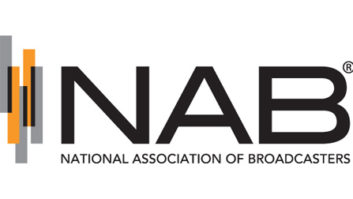A version of this article originally appeared in TV Technology.
Harris Broadcast is undergoing a post-acquisition realignment that includes staff cuts and operational changes. The company was acquired from Harris Corp. by private investors five months ago. There’s since been a quiet shuffling on the management level and a reduction in support staff.
“Total reduction is less than 10%, spread over a full-year timeframe, on a global basis,” said Harris Broadcast CEO Harris Morris. “What we’re doing is a positive overall action, which is refocusing on the strategy and the core, and investing in core platforms and services.”
Morris, who’s been with the company since January of 2008, said back office costs such as those associated with finance and order entry were too high as a result of “under-integrating” though a series of acquisitions, including Leitch and Encoda in the last nine years.
“We’ve been able to think about this since going private. How do we save some money in the back of the house to increase investment in sales, pre-sales, core support and R&D. What we really looked at is, how do we have more money to spend on doers — folks writing code and implementing? There are some changes. They’re always hard.”
There have also been cuts and shifts among folks familiar to customers, where Morris said management was “redundant.”
“There’s a couple of forward-facing individuals,” he said. “Anytime something like that happens, people will read into it.”
That’s especially true in today’s fluid broadcast supplier environment. One executive at a large station group heard that Harris was slashing one-third of the staff around the same time that Dielectric, the broadcast industry’s largest antenna supplier, decided to close. Both Morris and a consultant to the company said the figure was overstated.
The consultant noted that Harris has been undergoing personnel changes for the better part of a year to prepare for its divestiture from Harris Corp., the $5.5 billion defense contractor. Yet layoffs almost always make the news when a company is going through a divestiture. Harris Broadcast employed around 1,700 people when Harris Corp. announced its intent to sell last May. In November, 17 layoffs made the trade press and local media.
With the sale announcement, Harris Broadcast became one of three big suppliers subjected to a sale cycle in a matter of four years. Thomson announced the sale of Grass Valley in January of 2009, and Miranda went to Belden last year after acquiring OmniBus in 2010. All three offer a wide product line.
For customers, mergers, acquisitions and divestitures are now factored into the equipment-buying process, according to one broadcast network executive.
“The business cycle is as much a part of the decision as the technology itself,” he said. “It’s the first qualifier as we sit down and start considering a vendor. Then you get into product specifics.”
One of the first things he said that customers look at after a divestiture is the management team. At Harris, Morris was bumped up from president to CEO this year. Mike Oldham, former CEO of OmniBus and president of Grass Valley for the Americas, was brought on as senior vice president of global media sales in March. The rest of the team remains in place.
“Coming out of that it of uncertainty,” Morris said, “I think we’ve got a lot of energy in the team, particularly the leadership team. I have six or eight international trips planned in the next six or eight months.”
Around 57% of the company’s business is outside of North America, due in part to the 2009 digital transition.
“It’s a big issue when you see spending fall off like that, even if you know it’s coming,” Morris said. “It actually was an impetus to invest in those other regions. We see pretty good growth around the world, at different rates, in all regions.”
Morris said Harris Broadcast has not yet returned to the revenue level of 2011, when the division brought in $553.8 million, “but we expect to get back there. We see market growing globally at 4%, and we’re outpacing that, but don’t we expect it to grow in terms of double digits.”
Harris, like every other vendor in the business, is having to adapt to an increasingly IP-centric industry. Customers want flexible technology, in part because they don’t know what the market may demand next. Broadcast executives who spoke on background said interoperability was crucial to their purchasing decisions.
“You do need to be careful when you talk to a technology vendor, and whether they’re future-proofed, and whether their gear works with other vendors,” said one vice president of a mid-sized TV group.
One result is that broadcast technology is rapidly morphing into code.
“Today, it’s about one-third as what we think of as pure software sales,” Morris said. Even products like the Nexio server line are essentially firmware and applications that sit on the hardware, he said. As the shift continues toward more IP-based processing and delivery, Morris anticipates growing demand for firmware and app-based platforms.
“Some competitors are more hardware-centric, where I think there’s going to be pressure,” he said. “For us, if we can accelerate that shift, it allows us to take a ton of hardware cost out of the platform, and we can lower the cost per channel, stream or bit for the customer, and expand our bottom line.”
Going forward, Morris said Harris has several projects in the pipeline. “You’re going to also see us becoming more vocal on reinvesting on some of the big traffic systems, and add-ons, including targeted advertising. And you’re just going to see a lot about interoperability and integration … with both third parties and more robustness between Harris products.”












